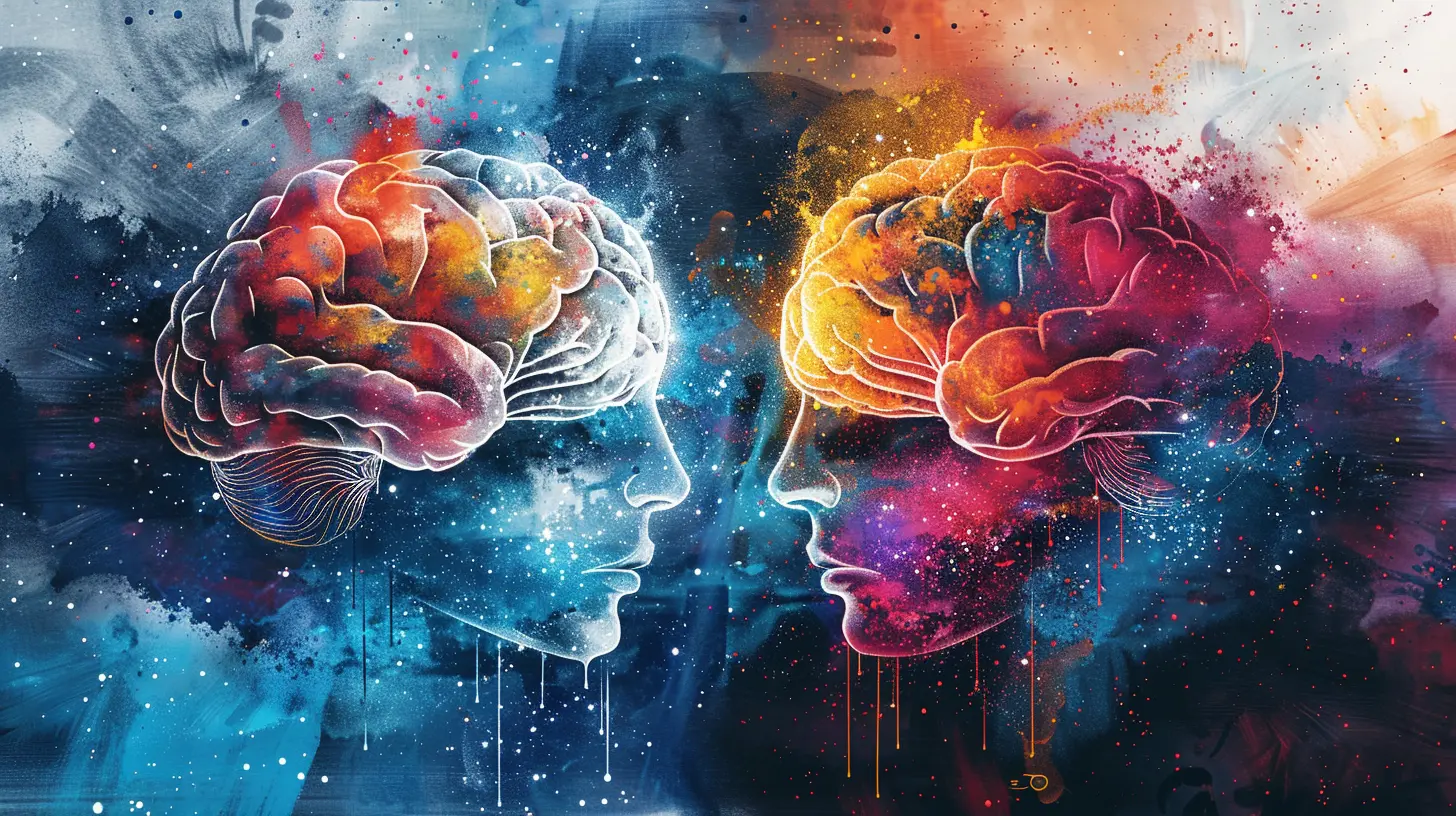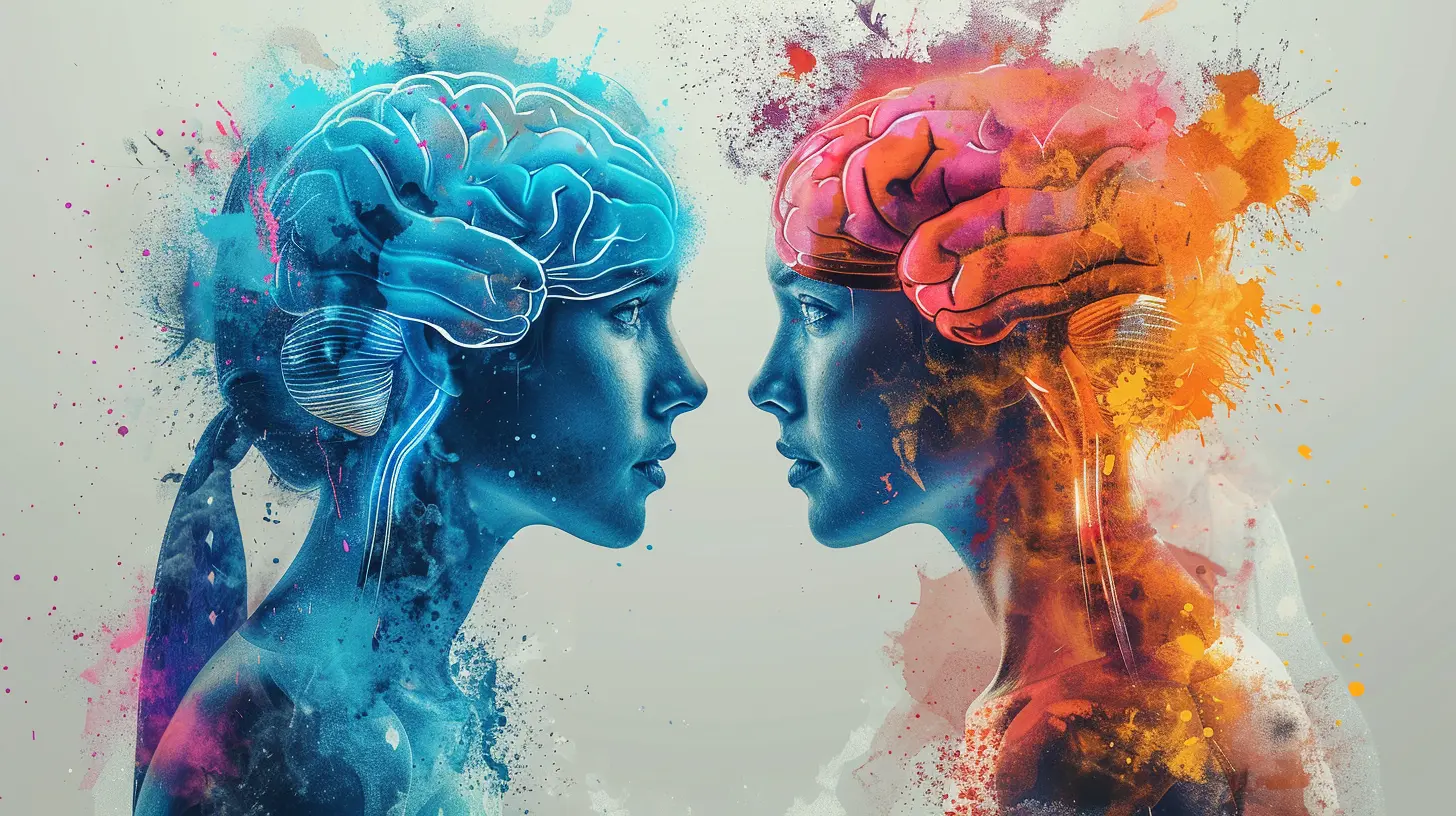Exploring the Connection Between Language and Thought
21 May 2025
Have you ever wondered how the words you speak shape the way you think? Or how your thoughts influence the language you use? This fascinating relationship between language and thought has intrigued philosophers, psychologists, linguists, and even everyday people for centuries. It’s a bit like asking the age-old question: Which came first, the chicken or the egg?
In this article, we’ll dive into the profound and complex connection between language and thought, exploring how they influence each other and what this means for how we understand the world around us. So, grab your coffee, and let’s embark on this mind-bending journey!

The Sapir-Whorf Hypothesis: Does Language Shape Thought?
One of the most famous ideas in this debate is the Sapir-Whorf Hypothesis, also known as linguistic relativity. This theory suggests that the language you speak influences the way you perceive and think about the world.Think about it like this: Imagine you’re wearing tinted sunglasses. The color of the lenses changes the way you see your surroundings. In the same way, your language might act as a “lens” through which you experience reality.
Strong vs. Weak Linguistic Relativity
Now, the Sapir-Whorf Hypothesis comes in two flavors: strong and weak.- The strong version claims that language determines thought. This means that without language, certain thoughts would be impossible to think.
- The weak version suggests that language influences thought but doesn’t completely determine it.
Most modern researchers lean towards the weak version. It’s not that language confines our thoughts entirely; rather, it nudges us to think in certain directions. For example, some languages have more words for colors, which can lead speakers to perceive colors differently—more precisely or distinctly—than speakers of languages with fewer color terms.
Real-World Examples of Linguistic Relativity
Want proof? Let’s look at some real-world examples.1. The Pirahã Tribe
The Pirahã, a small indigenous group in the Amazon, speak a language without numbers. They don’t have specific words for "one," "two," or "many." Instead, they use terms like "few" and "more." Studies have shown that this lack of numerical language affects their ability to count and perform mathematical tasks. In other words, because their language lacks numbers, it limits their ability to think about quantities in the way we do.
2. Russian and Shades of Blue
In Russian, there are two distinct words for light blue ("goluboy") and dark blue ("siniy"). Unlike English speakers, who use the catch-all term “blue,” Russian speakers are faster at distinguishing between shades of blue. This suggests that the language they speak enhances their ability to differentiate between these colors.
These examples highlight how language can influence perception and thought, but they also show that language doesn’t entirely control our cognitive abilities. After all, even if you don’t have a word for a color, you can still see it.

The Role of Thought in Shaping Language
Alright, so we’ve established that language can influence thought—but does it work the other way around? Does the way we think shape the language we use?Absolutely! Thought and language are like dance partners, constantly interacting and influencing one another.
New Concepts, New Words
One clear way that thought shapes language is through the creation of new words. When we come across new ideas or technologies, we often create new words to describe them. For example, the rise of the internet has led to the invention of words like “selfie,” “meme,” and “hashtag.”This shows that as our thoughts and experiences evolve, our language adapts to keep up. It’s like adding new tools to your mental toolbox so you can better articulate what’s happening in the world around you.
Abstract Thinking and Metaphors
Another way that thought shapes language is through the use of metaphors. Our ability to think abstractly allows us to use one concept to describe another. For instance, we might say, “Time is money” or “I’m feeling blue.” These metaphors are rooted in our thoughts and experiences, and they help us communicate complex ideas in simple, relatable terms.Metaphors are more than just poetic flourishes—they reveal how we think about the world. In fact, some psychologists argue that metaphors are fundamental to human cognition. We constantly use them to make sense of abstract concepts like time, emotions, and relationships.

Is Thought Possible Without Language?
Here’s a question that might keep you up at night: Can we think without language?On the surface, it might seem like the answer is “no.” After all, we often think in words, and it’s hard to imagine having a fully formed thought without the vocabulary to express it. But the truth is a bit more nuanced.
Non-Verbal Thought
While language is a powerful tool for organizing our thoughts, it’s not the only way we think. Humans can engage in non-verbal thought—thinking that doesn’t involve words.For example, consider visual thinkers like artists or architects. They can imagine complex structures or designs without necessarily putting those ideas into words. Similarly, emotions are often experienced without verbal labels. You might feel joy, anger, or sadness without immediately translating those feelings into language.
Pre-Linguistic Thought in Children
Another great example comes from children. Babies and toddlers clearly have thoughts and emotions long before they learn to speak. They can understand concepts like object permanence (the idea that something still exists even when you can’t see it) well before they have the words to describe it. This suggests that thought can exist independently of language, at least to some extent.Animals and Thought
And what about animals? Many animals, from dolphins to chimpanzees, display signs of problem-solving, planning, and even empathy—none of which require language as we know it. This further supports the idea that thought can occur without language, although it may be more limited in scope.
The Feedback Loop: How Language and Thought Co-Evolve
By now, you’ve probably realized that language and thought are deeply interconnected. In fact, they’re so intertwined that it’s hard to separate one from the other. They exist in a feedback loop, constantly influencing and shaping each other.Think of it like this: As you learn new words, your ability to think about certain concepts expands. And as you develop more complex thoughts, you’re driven to develop or use language that can express those ideas more clearly.
This feedback loop is always evolving. Just look at how slang or technical jargon changes over time. New ways of thinking lead to new words, and new words open up new ways of thinking. It’s a never-ending cycle—a linguistic dance that’s been going on for as long as humans have been able to communicate.
The Bilingual Brain: Does Speaking Multiple Languages Change the Way You Think?
If you speak more than one language, you might have noticed that you think a little differently when you switch between languages. But does being bilingual actually change the way you think?Cognitive Flexibility
Research suggests that bilingualism can enhance cognitive flexibility—the ability to switch between different tasks or ways of thinking. When you’re fluent in multiple languages, your brain gets used to switching between different linguistic systems, which may make it easier for you to switch between different types of thinking as well.Different Perspectives
Moreover, when you speak multiple languages, you’re exposed to different cultural perspectives. Language isn’t just a collection of words—it’s a reflection of the culture and worldview of the people who speak it. So, when you switch languages, you might also be shifting between different ways of understanding the world. It’s kind of like having a mental passport that lets you travel between different cognitive landscapes.
Conclusion: The Interplay of Language and Thought
So, what’s the final verdict on the connection between language and thought? Well, it’s complicated! Language and thought are deeply intertwined, with each influencing the other in a continuous feedback loop. Language shapes how we perceive and categorize the world, but our thoughts also shape the language we use to describe it.The beauty of this relationship is that it’s dynamic and ever-evolving. As long as humans continue to think and communicate, language and thought will continue to shape each other in fascinating ways.
So, the next time you find yourself searching for the right word or expressing a new idea, take a moment to appreciate the incredible cognitive dance happening in your brain. Language and thought are partners in a beautiful, intricate tango—and you’re the one leading the way.
all images in this post were generated using AI tools
Category:
Cognitive ScienceAuthor:

Janet Conrad
Discussion
rate this article
3 comments
Lisa Murphy
Language shapes our thoughts as much as it expresses them. Understanding this intricate bond reveals how our communication influences perception, creativity, and social interaction, ultimately enriching our understanding of ourselves and the world around us.
June 8, 2025 at 3:33 AM

Janet Conrad
Thank you for highlighting this crucial connection! Indeed, the interplay between language and thought profoundly impacts our perceptions and interactions, enriching our understanding of both ourselves and the world.
Calder McLemore
Insightful read—language truly shapes thought!
May 27, 2025 at 3:33 PM

Janet Conrad
Thank you! I'm glad you found it insightful. Language does play a crucial role in shaping our thoughts.
Faith Lamb
Language is like the funky dance partner of thought—sometimes leading, sometimes following, and occasionally stepping on our toes! 🕺💬 Let’s unravel this wild tango of words and ideas, where meanings swirl like confetti at a brain party. Who knew thinking could be so groovy? 🎉🧠
May 23, 2025 at 4:26 AM

Janet Conrad
Absolutely! Language truly is a dynamic dance with thought, shaping and being shaped in a lively exchange. Let's keep the groove going! 💃🧠✨



